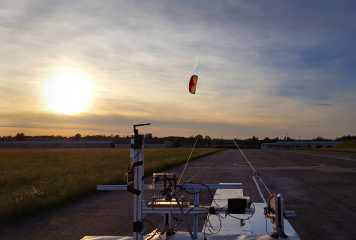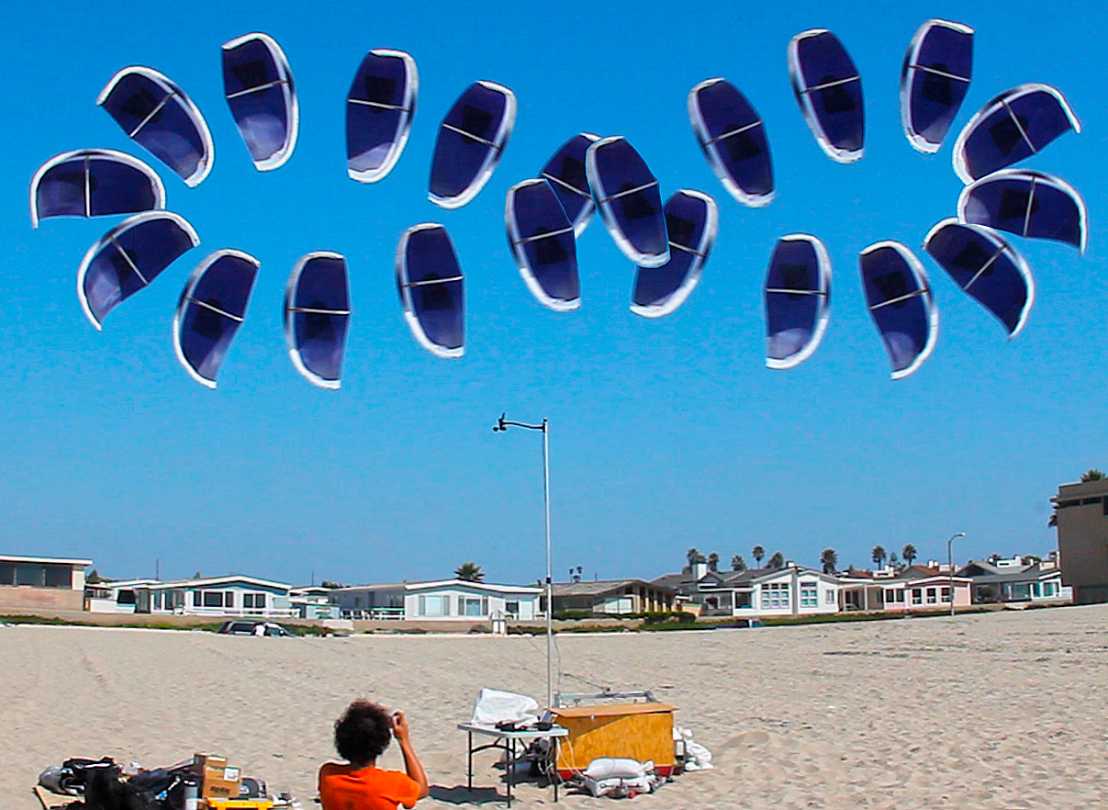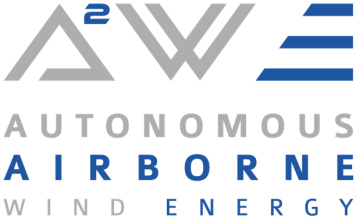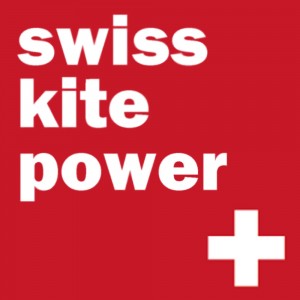Airborne wind energy

Airborne Wind Energy (AWE) Systems harvest wind energy by exploiting the aerodynamic forces generated by autonomous tethered wings, flying fast in crosswind conditions. This technology is able to reach higher altitudes, compared to conventional wind turbines, where the wind is generally stronger and more consistent. To achieve fully-autonomous, power-optimising flight of tethered wings, this projects focuses on advanced modelling and identification methods for unstable systems. This finally enables the design of optimal controllers for tracking periodic orbits in varying operating conditions.

In this research a ground-based generator concept is followed, whereby a kite is flown at high altitudes and the mechanical power is transmitted through tethers to a generator on the ground. To avoid tangling of tethers, the kite is typically flown on figure-eight trajectories.
Power is generated by the kite in two-phase cycles, so-called power cycles. During the first phase, the traction phase, the kite is driving the generators flying fast on crosswind paths maximizing the power. During this operation the lines are continuously unrolled until a maximum tether length is reached. This is followed by a so-called retraction phase where the kite is driven to the borders of the wind window and pulled back using less power than previously generated. The video below demonstrates the concept for a surf kite.
To address the multidisciplinary nature of this work, we collaborate with different research centers (Empa, FHNW, EPFL) and the start-up TwingTec AG to develop fully-autonomous airborne wind energy platforms.
To control kites for autonomous power generation over an extended period of time with varying wind conditions, the Airborne Wind Energy Group focuses on the following research topics:
The accurate reconstruction of the wing's position, velocity and heading is of fundamental importance for the automatic control of these kinds of systems. The difficulty of the estimation problem arises from the nonlinear dynamics, wide speed range, large accelerations and fast changes of direction that the wing experiences during operation. Filtering algorithms relying on kinematic laws have been designed and successfully applied.
Models suitable for control design have been developed, capturing the steering behavior of the wing as a function of the control input, external disturbances and the physical parameters of the system.
A robust and easy-to-implement controller has been derived, on the basis of the turning model of the wing. A low-level control loop regulates the flight direction of the wing to a desired value, and an outer controller computes the reference heading in order to achieve the desired figure-eight crosswind paths. The controller has been tested successfully in a wide range of wind conditions and with different wings.
The optimal operating conditions of airborne wind energy generators are being investigated, and adaptive algorithms are being developed in order to achieve the highest efficiency in the presence of time-varying and uncertain wind conditions.
The developed models and experimental data are being used to devise the possible tradeoffs between power capture and system's cost, as well as the best control approach in terms of average generated power, accounting for structural loads and other system constraints.

The Autonomous Airborne Wind Energy (A2WE) project will develop a paradigm-shifting concept in which airfoils are flown at high altitudes, transmitting mechanical power to a generator on the ground through a physical tether. To achieve this goal, the A2WE consortium from EPFL, ETH and FHNW focuses on both fundamental research, as well as practical development, in the fields of dynamic modeling and identification, optimal control and mechanical and electrical design. The project is funded by a Sinergia Grant from the Swiss National Science Foundation.

This project funded by the Swiss Commission for Technology and Innovation (CTI) brings together a consortium from TwingTec, Empa, FHNW and ETH to develope a new wind energy technology, where the wind energy is harnessed by tethered wings, so-called Twings. The project will demonstrate the extended autonomous operation of this next-generation airborne wind energy technology in varying wind conditions.

The SwissKitePower project is a multidisciplinary research and development effort aimed at creating a totally new device which can harness wind energy at high altitudes. The winds at altitude are stronger and more consistent than those at the ground and represent an enormous potential source of renewable energy. external page More information

AWESCO combines six interdisciplinary academic and four industrial network partners with seven associated partners, all selected on the basis of excellence and complementarity. The idea of Airborne Wind Energy (AWE) is to replace the most efficient part of a conventional wind turbine, the tip of the rotor blade, by a fast flying high efficiency kite.
AWESCO is a European Horizon 2020 research project with Swiss participation funded by the Swiss Federal Government (external page SERI). external page More information